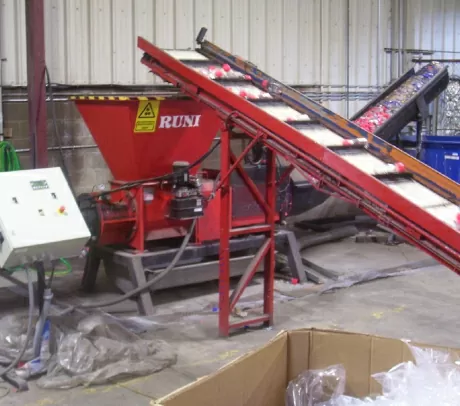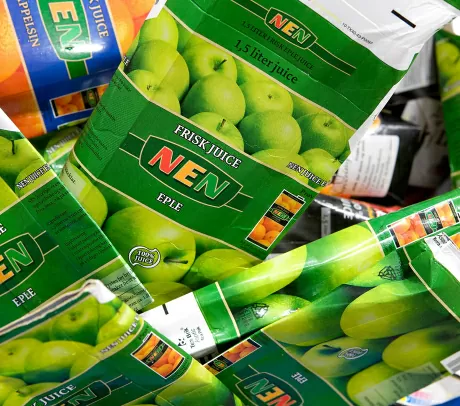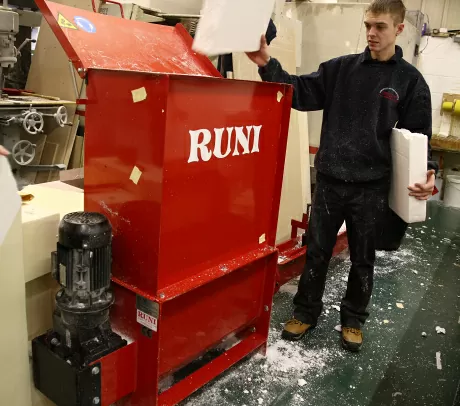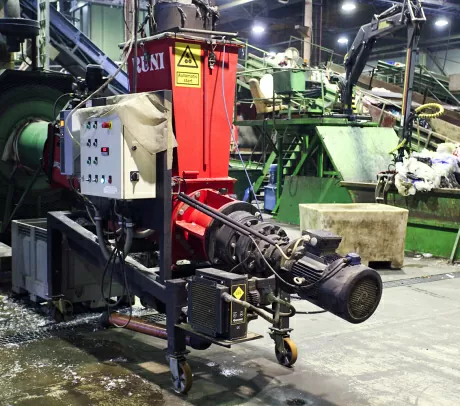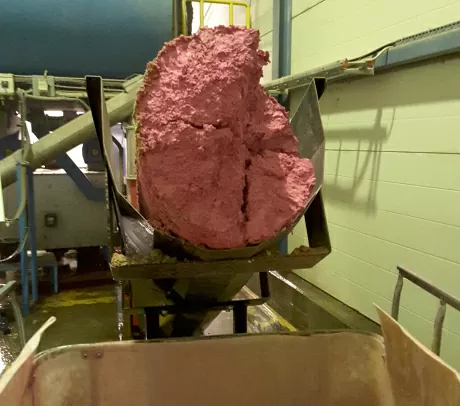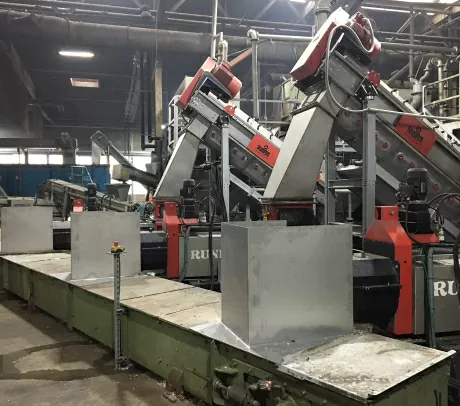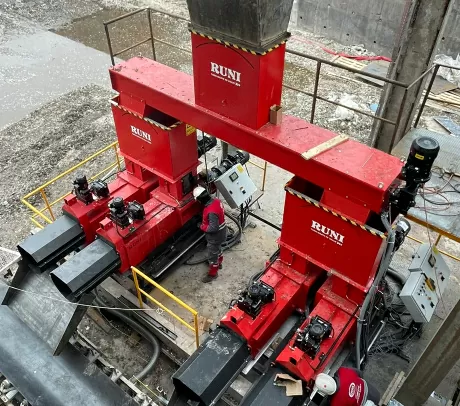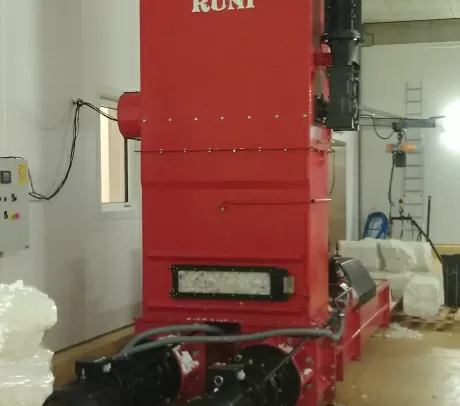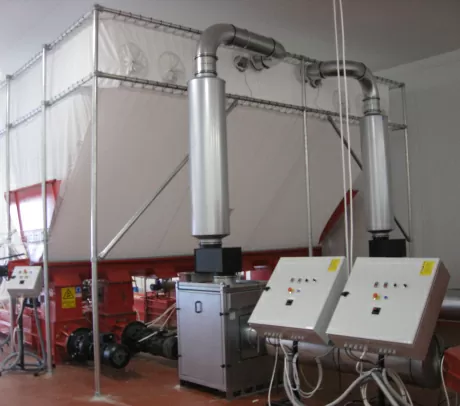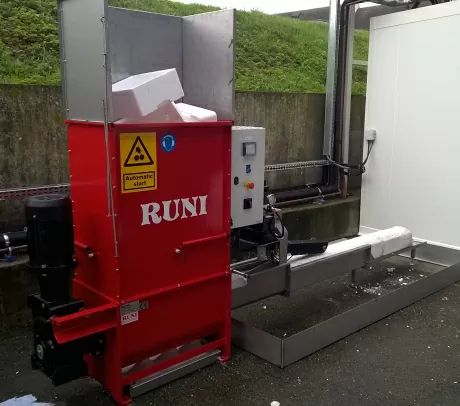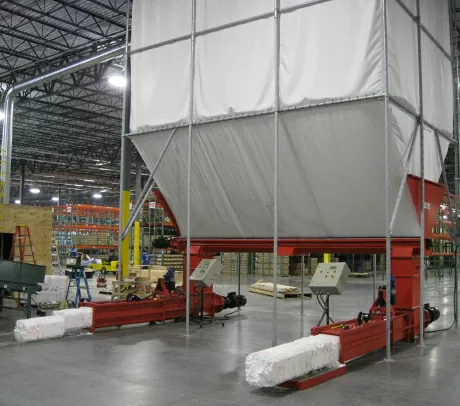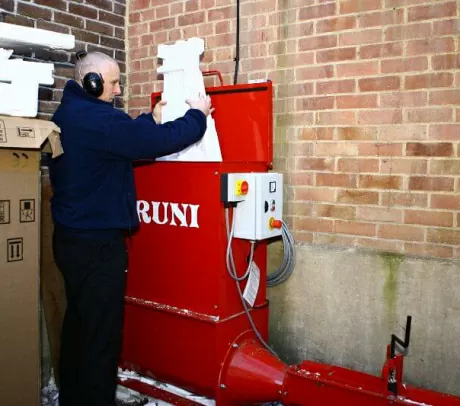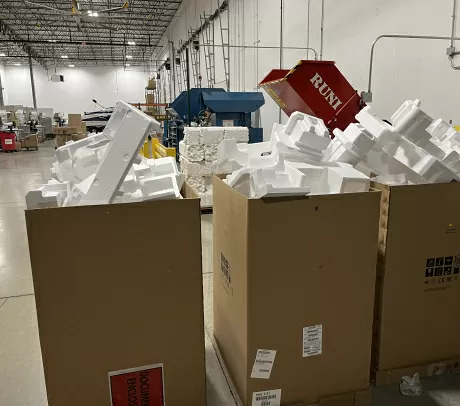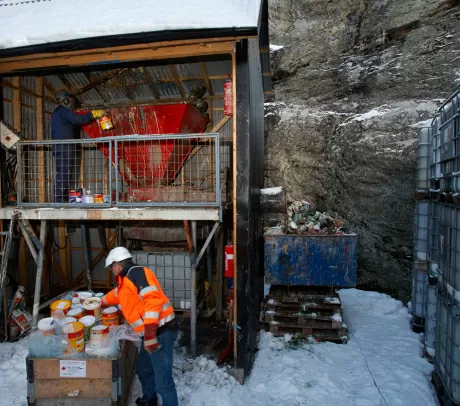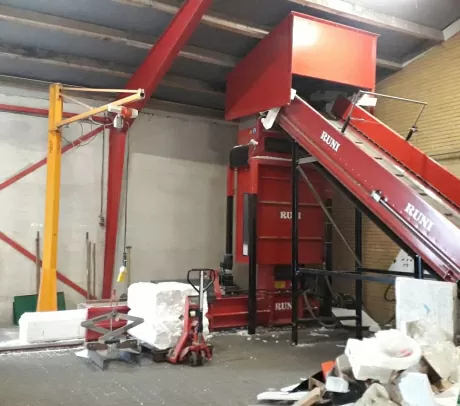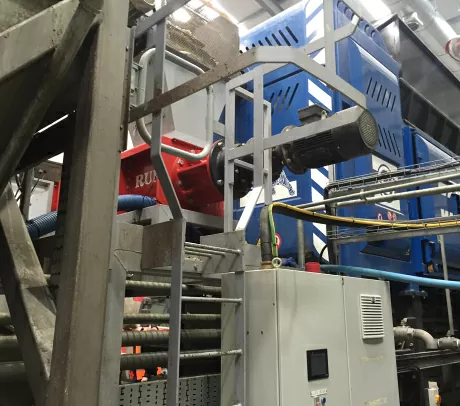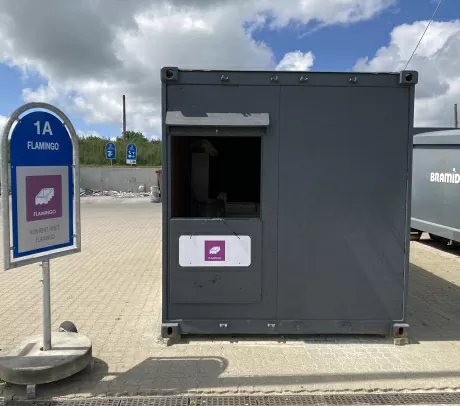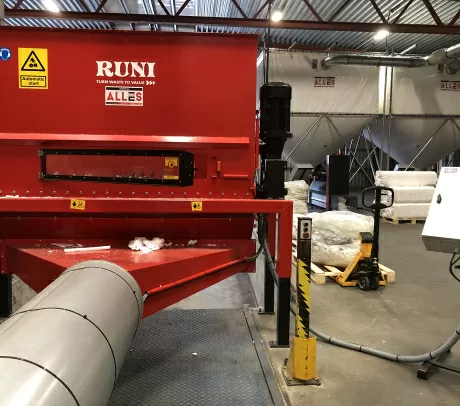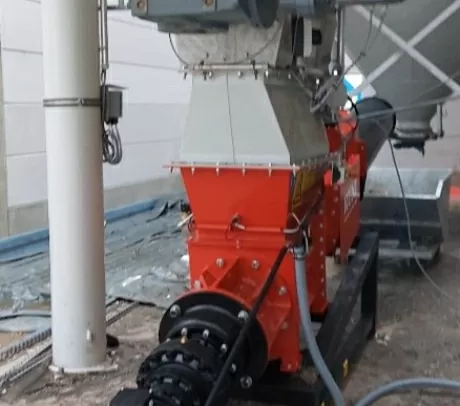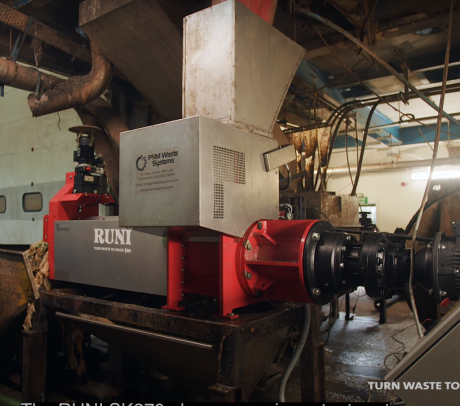EPP recycling - How to Recycle Expanded Polypropylene with RUNI Compactor

With a RUNI compactor, you can move your EPP waste into the recycling stream and save money on storage, transportation, and fees for disposing of your waste. Furthermore, you can sell your compacted EPP blocks to recyclers and Turn your waste into value!
EPP is a very versatile foam with various qualities: it is very strong, flexible, has a high impact resistance, provides thermal insulation, and is water-repellent. This makes it a popular material to use for packaging products and food. Its strength, lightweight, and energy-absorbent properties also make it a very popular material in the automobile industry. Today, a lot of EPP is sent to landfills after its initial use, but since EPP is 100 % recyclable and can be recycled in a relatively easy way, this makes no sense. Luckily, the environmental benefits of EPP recycling are now more acknowledged, and the demand for recycled EPP is currently rising. A screw compactor from RUNI can ease the handling of EPP waste and smooth the process of EPP recycling.
How to Recycle EPP with a RUNI Compactor
Step 1: Collect the waste
The first step in recycling expanded polypropylene (EPP) is collecting the waste and separating the EPP from other waste types. This can be done at the individual companies handling EPP waste or at municipal recycling facilities. The closer the EPP waste is to the RUNI machine, the smaller the transportation costs of the uncompacted EPP will be.
Afterward, the EPP must be sorted according to density, as the density determines which RUNI machine you will need to be able to compact the material. Low-density EPP can be compacted in the same machine as EPS, while high-density expanded polypropylene needs a machine with a melting chamber to create cohesive blocks or to be compacted into an endless bag.
Step 2: Compaction in the RUNI Screw press
When the EPP has been collected, isolated from other waste types, and sorted according to its density, it is time to feed the EPP to the appropriate RUNI machine. This can be done manually into a 45-degree hopper or conveyor belt. The EPP is fed into a heavy-duty pre-crusher which shreds it. The screw and the automatic jaws then compact the low-density EPP into solid blocks with a density of up to 350 kg/m3. The high-density EPP will be compacted in the same way, but a melting chamber will melt the surface of the block to ensure it is stable.

Step 3: Pack and ship the compacted EPP for further recycling
When the compacted EPP exits the RUNI machine, it will be in the form of solid square blocks with a measurement of 380x380 mm. These blocks can be sold to recycling companies.
The blocks are easily stackable on pallets, especially using a block divider and crane.

How the RUNI Compactor Ensures Superior EPP Recycling
The hopper is equipped with incorporated sensors that ensure the automatic start and stop of the machine. The machine will start when the sensors detect material in the hopper and stop when they no longer detect any. The RUNI heavy-duty pre-crusher works well for densities up to 50 kg/m3. If you have materials with a higher density, we also have an alternative shredder with an extra powerful motor that can handle this. The automatic jaws ensure constant pressure, creating the best result. The RUNI screw compactor ensures a compaction rate of up to 50:1, so it helps reduce costs for storage and transportation, and selling the EPP for further recycling eliminates the costs for disposal.
Read more about RUNI’s solutions for compacting EPP here.
Want to Recycle Other Waste Types? Find More Recycling Guides Here
Do you have other types of waste, that you would like to recycle? Take a look at our other recycling guides:
Recycling of:
Besides our machines for compacting we also offer solutions for dewatering of various packagings:
If you need any further information, or you have any questions about the RUNI machines, please fill out the form below. We will contact you as soon as possible.


